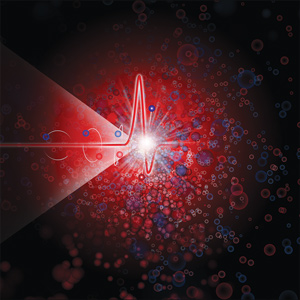
Historical Archive
Laser pulse travels 300 times faster than light
17 Jun 2002
Scientists at NEC Corporation's (NEC) basic research unit in the US claim to have proven that light can travel faster than its acknowledged speed in vacuum in a successful experiment in superluminal light propagation.
Despite exceeding the vacuum speed of light, the experiment is not at odds with Einstein's theory of relativity and is explainable by existing physical theory. The research work, which may result in significantly faster information transfer speeds across networks and in computers, was published in Nature by NEC research scientists Dr. Lijun Wang, Dr. Alexander Kuzmich and Dr. Arthur Dogariu.
In the experiment, NEC scientists measured the time taken by a pulse of light to pass through a 6cm-long specially prepared chamber containing cesium gas. The 3-microsecond long pulse of light would normally take only 0.2 nanoseconds to pass through the chamber in a vacuum. But when passed through the specially prepared chamber, light emerged 62 nanoseconds earlier than it would have had it passed through the chamber in a vacuum. This unusual phenomenon is the result of "anomalous dispersion", an effect not seen in nature in transparent materials and is created by the non-natural thermal state of the cesium gas used in the chamber.
A pulse of light consists of many components, each at a different wavelength as can be seen when sunlight passes through a prism in "normal dispersion" and is broken down into its constituent colors. The effect of anomalous dispersion on the wavelengths of the components of light, however, is to modify them. Anomalous dispersion causes components with a shorter wavelength in a vacuum to have a longer wavelength in the chamber and conversely, components with a longer wavelength in a vacuum have a shorter wavelength in the chamber. Unlike with normal dispersion, anomalous dispersion has the extraordinary effect of enabling a light pulse to appear again at a distant point along its direction of propagation and produce the exact shape of the light pulse that entered the chamber. A light pulse can thus traverse the distance between two points faster than its vacuum speed.
"Our experiment shows that the generally held misconception that nothing can move faster than the speed of light, is wrong. Einstein's Theory of Relativity still stands, however, because it is still correct to say that information cannot be transmitted faster than the vacuum speed of light," said Dr. Lijun Wang. "We will continue to study the nature of light and hopefully it will provide us with a better insight about the natural world and further stimulate new thinking towards peaceful applications that will benefit all humanity."

